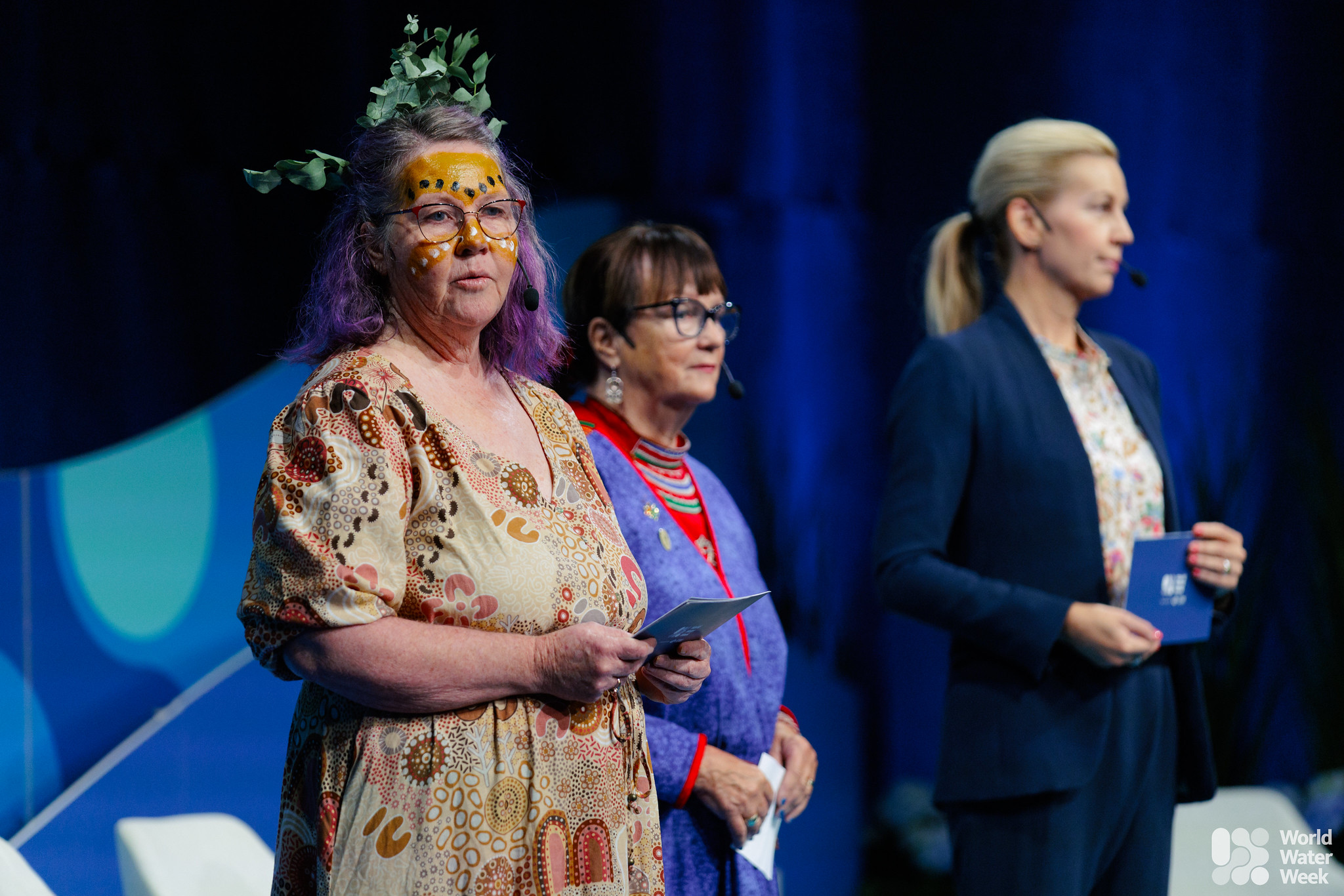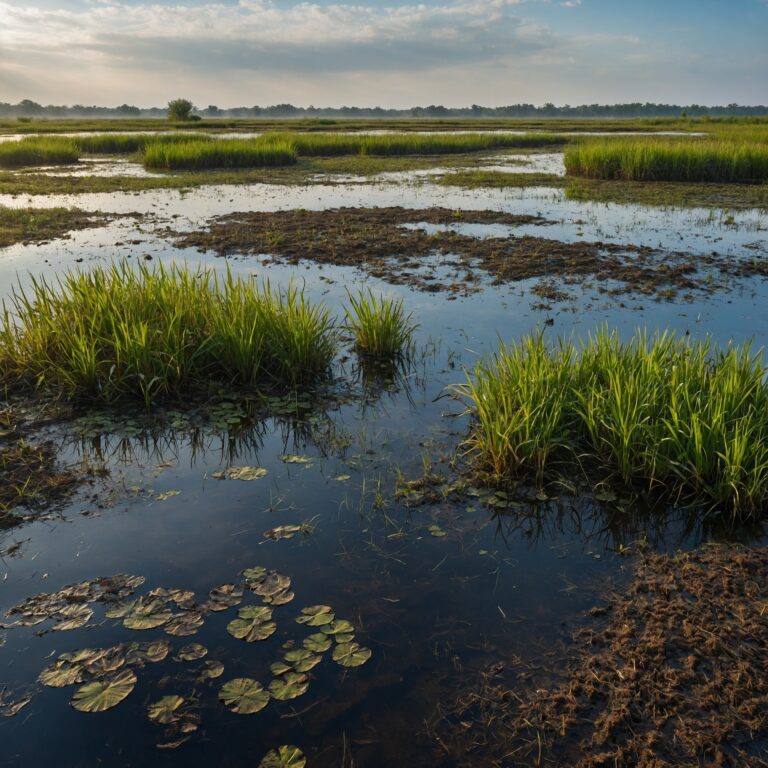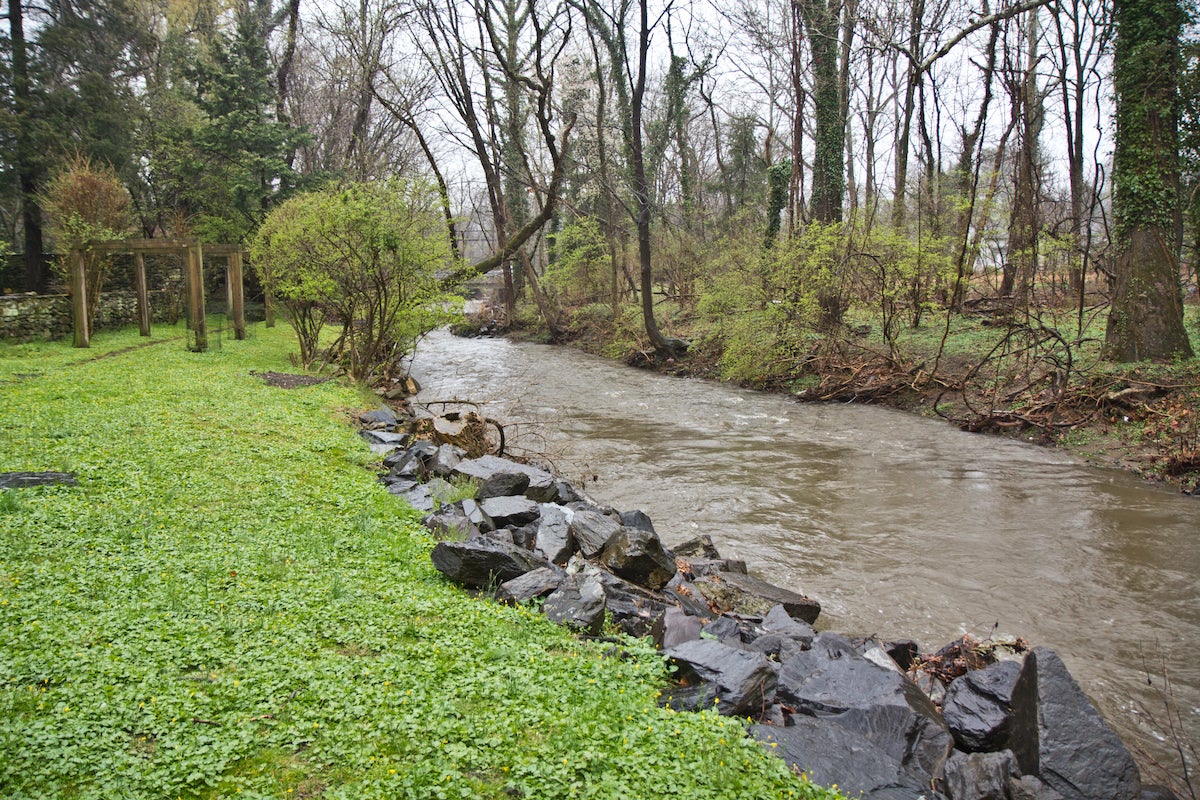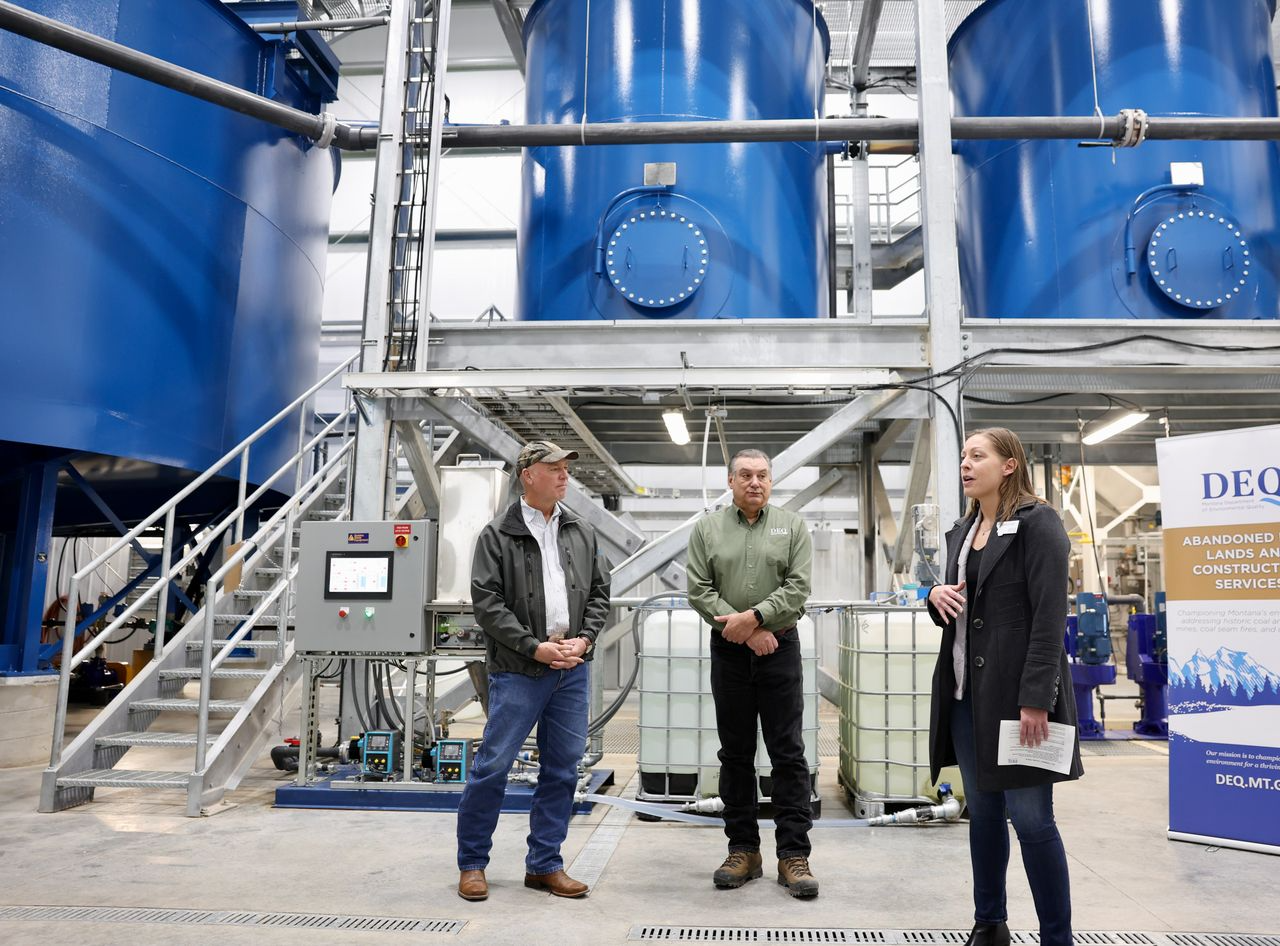Guardians of the water cycle: Indigenous leadership from Stockholm to Belém – Stockholm International Water Institute | SIWI

Report on Indigenous Leadership in Water Governance and Climate Action: Contributions to Sustainable Development Goals
The Role of Indigenous Stewardship in Achieving SDG 6 and SDG 15
Ahead of the COP30 climate conference, analysis from World Water Week underscores the integral role of Indigenous Peoples in global environmental governance. Their stewardship of land and water is fundamental to achieving key Sustainable Development Goals (SDGs), particularly those concerning water and terrestrial ecosystems.
- SDG 15 (Life on Land): A forthcoming SIWI–PIK study reveals that Indigenous territories are critical for maintaining terrestrial ecosystems and biodiversity. These lands are responsible for generating approximately 25 percent of rainfall on land, highlighting their function in safeguarding forests, soils, and wetlands.
- SDG 6 (Clean Water and Sanitation): By protecting the sources of the water cycle, Indigenous communities directly contribute to the sustainable management of water resources. Their holistic worldview, which treats water as a single living entity, aligns with the integrated approach required to ensure the availability and sustainable management of water for all.
Indigenous Knowledge Systems as a Framework for Climate Resilience and SDG 13
Indigenous governance systems provide proven models for climate adaptation and resilience, directly supporting the objectives of SDG 13 (Climate Action). These systems integrate traditional knowledge with nature-based solutions to restore ecological balance and strengthen community resilience.
- Restoration of Degraded Landscapes: In Malawi, community-led practices such as deep-bed farming are being used to capture rainwater and restore groundwater levels. This technique exemplifies how traditional knowledge can heal the hydrological cycle, keeping water in the soil and landscape.
- Informing Climate Policy: The practical application of Indigenous knowledge offers a vital resource for national adaptation plans and climate finance mechanisms. Integrating these time-tested strategies into global environmental frameworks is essential for building effective, place-based climate resilience.
- Convergence of Knowledge: The success of these local practices demonstrates a convergence of traditional ecological knowledge and scientific understanding, proving that effective climate adaptation is relational and rooted in care for both people and the environment.
Advancing Inclusive Governance for Sustainable Development: A Focus on SDG 10 and SDG 16
A central message from Indigenous leaders is the demand for a transition from symbolic participation to substantive, shared power in decision-making processes. This call for co-leadership is critical for achieving goals related to equality and institutional justice.
- SDG 10 (Reduced Inequalities): The call to move beyond consultation to co-creation and co-leadership directly addresses systemic inequalities. Ensuring Indigenous institutions have the authority to shape solutions and monitor progress is a prerequisite for equitable development.
- SDG 16 (Peace, Justice and Strong Institutions): Meaningful inclusion in governance structures is a cornerstone of building effective, accountable, and inclusive institutions. The location of COP30 in the Amazon reinforces this imperative, as the region’s health—and by extension, global climate stability—is inseparable from the rights and leadership of its Indigenous Peoples.
Conclusion: A Pathway to Achieving Global Goals Through Partnership and Co-Leadership
The insights from World Water Week provide a clear directive for COP30: achieving climate stability and water security is contingent upon restructuring governance to center Indigenous leadership. This approach not only advances environmental goals such as SDG 6, SDG 13, and SDG 15 but is also a matter of justice and human rights, aligning with SDG 10 and SDG 16. The formation of partnerships between Indigenous leaders, scientists, and policymakers, as highlighted by the SIWI-PIK study, exemplifies the collaborative approach needed under SDG 17 (Partnerships for the Goals) to restore balance to our planet’s climate and water systems.
1. Which SDGs are addressed or connected to the issues highlighted in the article?
-
SDG 6: Clean Water and Sanitation
The article’s central theme is the management and protection of water. It emphasizes viewing water as a “living system” and highlights the importance of Indigenous stewardship in maintaining the global water cycle, restoring groundwater, and promoting the “integrated management of land and water resources.”
-
SDG 13: Climate Action
A direct link is made between water and climate, stating that “Water is central to climate stability.” The article discusses how Indigenous knowledge can strengthen resilience, inform “national adaptation plans,” and contribute to climate stability, connecting local water management practices to global climate goals discussed at events like COP30.
-
SDG 15: Life on Land
The article discusses the protection of terrestrial ecosystems as integral to water management. It mentions the “stewardship of forests, soils and wetlands” and provides an example of “restoring degraded landscapes” in Malawi, which directly relates to the conservation and restoration of life on land.
-
SDG 10: Reduced Inequalities
The article strongly advocates for the political inclusion of Indigenous Peoples. The call to move from “symbolic participation” to “shared decision-making” and “co-leadership” directly addresses the need to empower marginalized communities and ensure their voices are central in environmental governance.
-
SDG 16: Peace, Justice and Strong Institutions
The demand for Indigenous institutions to have the “authority to shape solutions and monitor progress” speaks to the need for inclusive and participatory decision-making. The article argues that ensuring “Indigenous rights and leadership” is a matter of justice and a prerequisite for effective and equitable environmental governance.
2. What specific targets under those SDGs can be identified based on the article’s content?
-
SDG 6: Clean Water and Sanitation
- Target 6.5: Implement integrated water resources management at all levels. The article supports this by advocating for an integrated approach where water is not “divided into blue or green—it is one living entity that must be cared for as a whole.”
- Target 6.6: Protect and restore water-related ecosystems. This is reflected in the emphasis on “stewardship of forests, soils and wetlands” and the example of restoring the hydrological cycle in Malawi.
- Target 6.b: Support and strengthen the participation of local communities in improving water and sanitation management. The article’s core message about moving from “consultation to co-leadership” for Indigenous communities directly aligns with this target.
-
SDG 13: Climate Action
- Target 13.1: Strengthen resilience and adaptive capacity to climate-related hazards. The article highlights how “Indigenous governance systems hold knowledge that strengthens the resilience of both ecosystems and societies” and gives the example of deep-bed farming as a local adaptation practice.
- Target 13.2: Integrate climate change measures into national policies, strategies and planning. The article explicitly states that “Indigenous stewardship can help inform national adaptation plans.”
-
SDG 15: Life on Land
- Target 15.1: Ensure the conservation, restoration and sustainable use of terrestrial and inland freshwater ecosystems. The article discusses how protecting forests and wetlands is essential for the water cycle and global climate, noting that “Indigenous Peoples’ lands are the source of about 25 percent of rainfall on land.”
- Target 15.3: Combat desertification, restore degraded land and soil. The example of the community in Malawi “restoring degraded landscapes” and “healing the hydrological cycle” through deep-bed farming is a direct application of this target.
-
SDG 10: Reduced Inequalities
- Target 10.2: Empower and promote the social, economic and political inclusion of all. The article’s primary call to action is for the political inclusion of Indigenous Peoples, demanding that “inclusion must mean shared decision-making, not symbolic participation.”
-
SDG 16: Peace, Justice and Strong Institutions
- Target 16.7: Ensure responsive, inclusive, participatory and representative decision-making at all levels. This target is addressed by the call for a shift “from consultation to co-leadership and co-creation of knowledge—where Indigenous institutions have authority to shape solutions and monitor progress.”
3. Are there any indicators mentioned or implied in the article that can be used to measure progress towards the identified targets?
-
For SDG 6 (Clean Water and Sanitation)
- Implied Indicator for Target 6.5: The degree to which Indigenous knowledge systems are integrated into national and global water governance frameworks. The article suggests progress is measured by how well these frameworks reflect the holistic worldview of water as “one living entity.”
- Implied Indicator for Target 6.b: The level of decision-making power held by Indigenous communities in water management. Progress would be measured by the transition from “symbolic participation” to tangible “co-leadership” roles.
-
For SDG 13 (Climate Action)
- Implied Indicator for Target 13.2: The extent to which national adaptation plans and climate finance mechanisms incorporate Indigenous knowledge and stewardship practices.
-
For SDG 15 (Life on Land)
- Implied Indicator for Target 15.3: The area of degraded land restored using traditional and local practices. The article points to the success of community-led efforts like “deep-bed farming” in Malawi as a measurable outcome.
- Implied Indicator for Target 15.1: The health and stability of the water cycle in regions managed by Indigenous Peoples. The SIWI–PIK study’s finding that these lands “are the source of about 25 percent of rainfall on land” suggests that maintaining this function is a key indicator of ecosystem health.
-
For SDG 10 & 16 (Reduced Inequalities & Strong Institutions)
- Implied Indicator for Targets 10.2 & 16.7: The formal authority granted to Indigenous institutions in environmental decision-making processes. The article implies that a key metric is whether these institutions have the power to “shape solutions and monitor progress,” moving beyond mere consultation.
4. Table of SDGs, Targets, and Indicators
| SDGs | Targets | Indicators Identified in the Article (Implied) |
|---|---|---|
| SDG 6: Clean Water and Sanitation | 6.5: Implement integrated water resources management. | Degree of integration of Indigenous holistic knowledge of water into governance frameworks. |
| SDG 6: Clean Water and Sanitation | 6.b: Strengthen the participation of local communities in water management. | The level of authority held by Indigenous communities, measured by the shift from “symbolic participation” to “co-leadership.” |
| SDG 13: Climate Action | 13.1: Strengthen resilience and adaptive capacity. | Adoption and success of local, nature-based adaptation practices (e.g., deep-bed farming). |
| SDG 13: Climate Action | 13.2: Integrate climate change measures into national policies. | Extent to which Indigenous stewardship practices inform national adaptation plans. |
| SDG 15: Life on Land | 15.1: Conserve and restore terrestrial and freshwater ecosystems. | Health of forests, soils, and wetlands in Indigenous territories, measured by their contribution to moisture recycling (e.g., 25% of rainfall). |
| SDG 15: Life on Land | 15.3: Restore degraded land and soil. | Area of degraded landscapes restored through community-led, traditional practices. |
| SDG 10: Reduced Inequalities | 10.2: Empower and promote the political inclusion of all. | Level of shared decision-making power afforded to Indigenous Peoples in environmental governance. |
| SDG 16: Peace, Justice and Strong Institutions | 16.7: Ensure inclusive and participatory decision-making. | Formal authority of Indigenous institutions to “shape solutions and monitor progress” in climate and water policy. |
Source: siwi.org
What is Your Reaction?
 Like
0
Like
0
 Dislike
0
Dislike
0
 Love
0
Love
0
 Funny
0
Funny
0
 Angry
0
Angry
0
 Sad
0
Sad
0
 Wow
0
Wow
0













































































